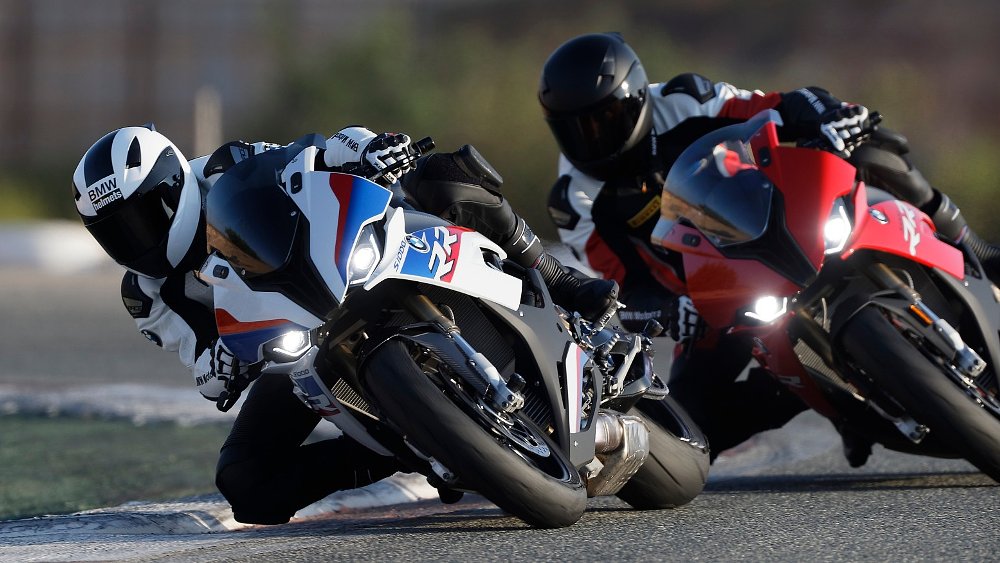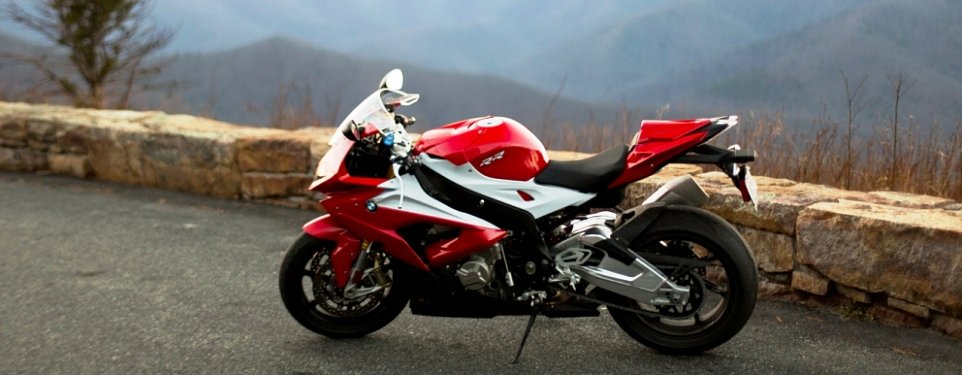The press fleet manager wanted to know if I might be riding the BMW S 1000 RR at the racetrack. What red-blooded mammal on planet Earth would not want to pilot a BMW superbike on a race track?
I strategically timed my request to ride this white stallion in alignment with my next track-day outing.
I was sure BMW would approve, as our most previous first ride review of their flagship superbike took place at Barber Motorsports Park, arguably one of the most extravagant race track facilities here in the United States. If you are looking for an in-depth breakdown of the BMW S 1000 RR, covering all the technical specifications, you’ll want to click on that first ride review.
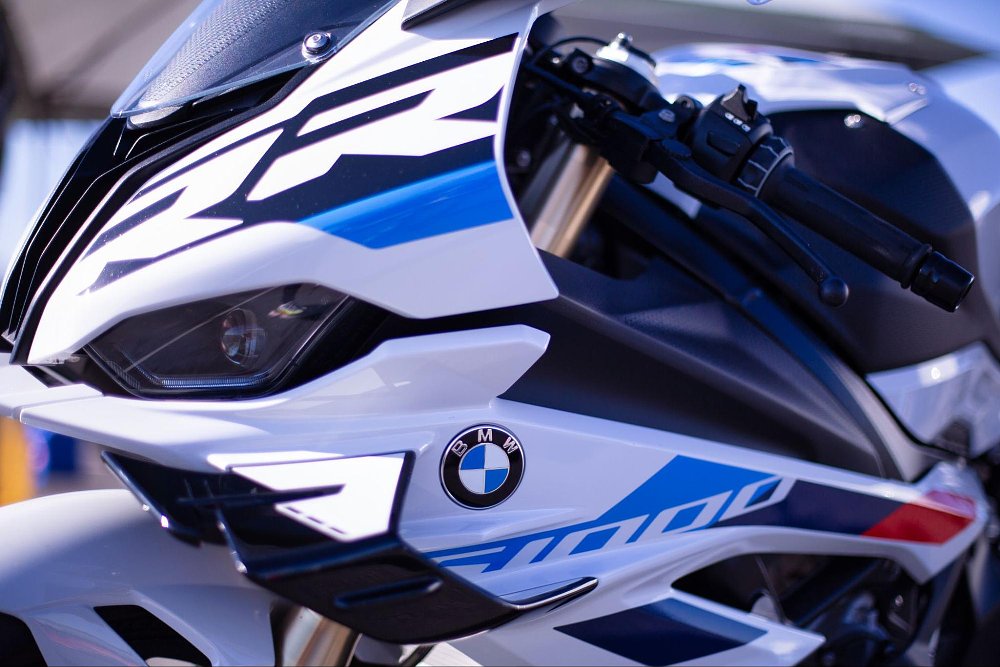
The last and only time I’ve ridden a S1kRR was back in 2015, as a guest rider in a MOTO USA superbike shoot out at Willow Springs Raceway. A lot has changed in the past eight years, not only for me but also for the Beemer, and I had been looking forward to this reacquaintance.
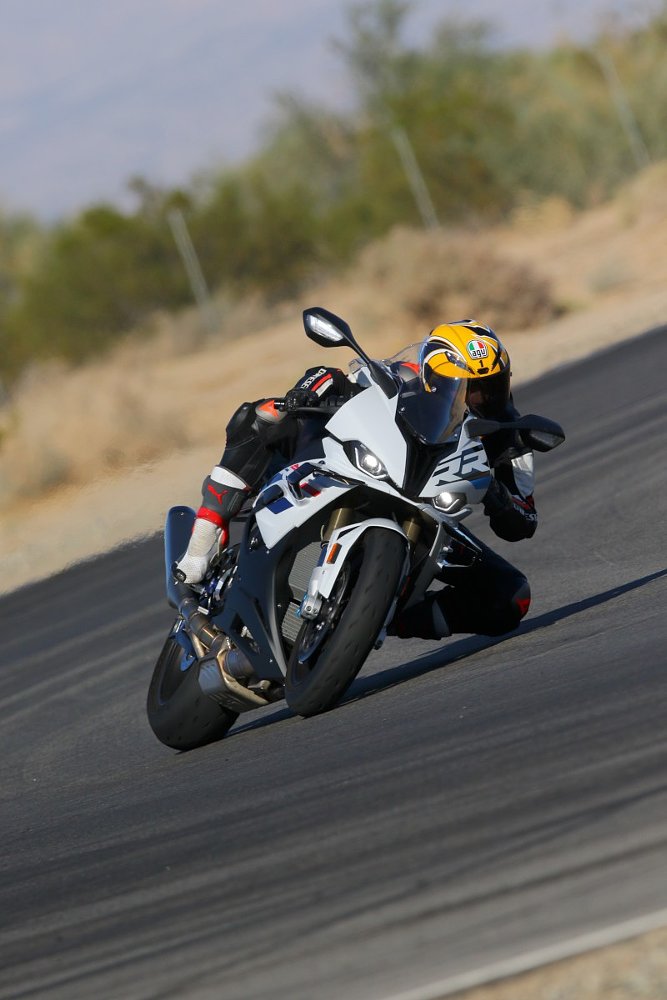
On the race track
Respect. It’s the first word that comes to mind when I swing a leg over a 1,000 cc superbike, especially a pricey one like the S 1000 RR. A lack of respect on a bike like this and a rider might find themselves in a gurney with a fist full of insurmountable repair bills. Thankfully, the S 1000 RR does come with a full suite of electronic aids to help soften that edge.
ABS control, throttle response, launch control, Dynamic Traction Control (DTC), wheelie control, slide control, pit lane limiter, DBC (Dynamic Brake Control), Hill Start Control Pro, and engine braking are all electronic toggles a rider can endlessly tweak in the intuitive but daunting user interface on the dash. I can bore you with the details of each ride mode or simply cut to the chase — it is worth the time and effort to customize a Race Pro map to your needs.
I am normally a “set it and forget it” kind of rider with fancy electronics, but riding on my home track of Chuckwalla Valley Raceway I knew what a good lap should feel like, and so I began scrolling, tapping, and pushing buttons towards my ideal setting. I softened the rebound of the suspension, turned engine response all the way up, but still had a safety net of DTC, ABS, wheelie control, and slide control, all on a mild setting. It took a few sessions to really dial it in, but once it was done the new setting felt great. If the BMW had a permanent living space in my garage it would be nice knowing that my bespoke map setting is saved and ready for the next track day.
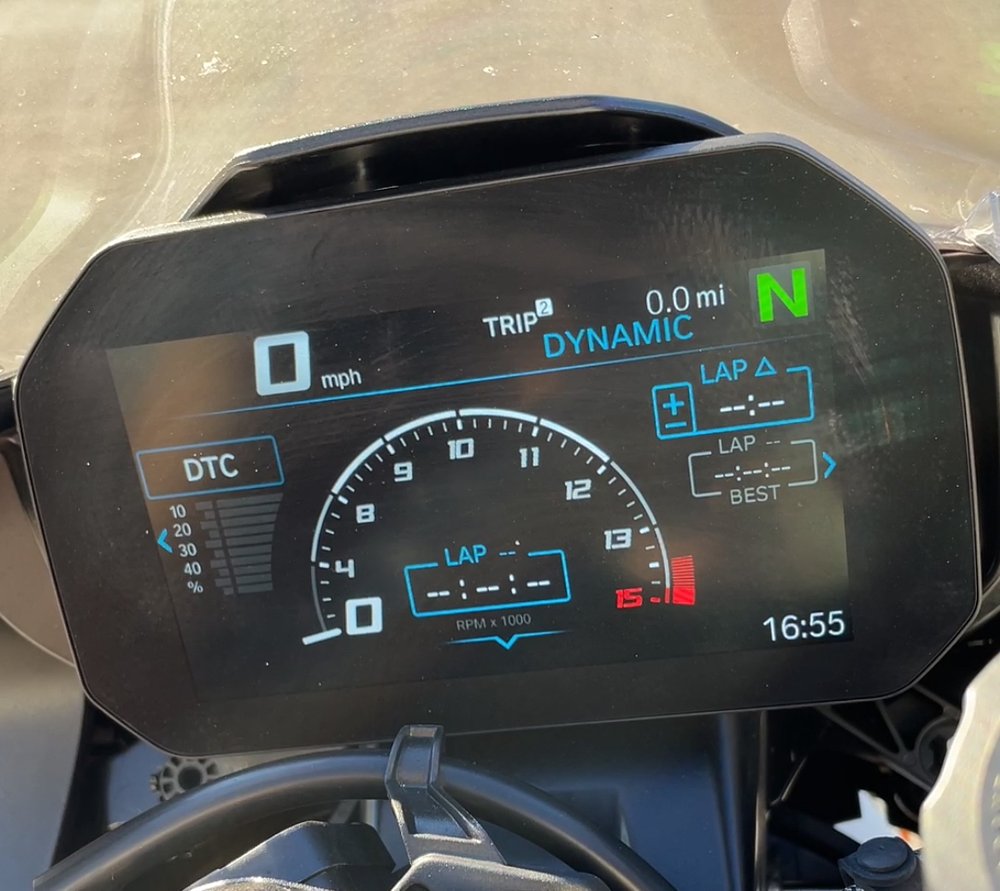
As far as a track-day bike goes, it is difficult to ask for more from a motorcycle. Beyond the infinitely tunable electronics, the S1kRR also features a quickshifter (for up and down) and four different dash interfaces optimized to show the most important data while track riding. Track-day riders will appreciate BMW’s efforts to make the S 1000 RR easily transform into a race-track-ready machine. Components like the billet aluminum adjustable rear sets, a reversible shifter to swap between traditional or GP shift, a swingarm that allows for shock height and pivot changes, simplified wheel removal mods, and even a tail light section designed for quick unplug to avoid that dreaded duct tape covering.
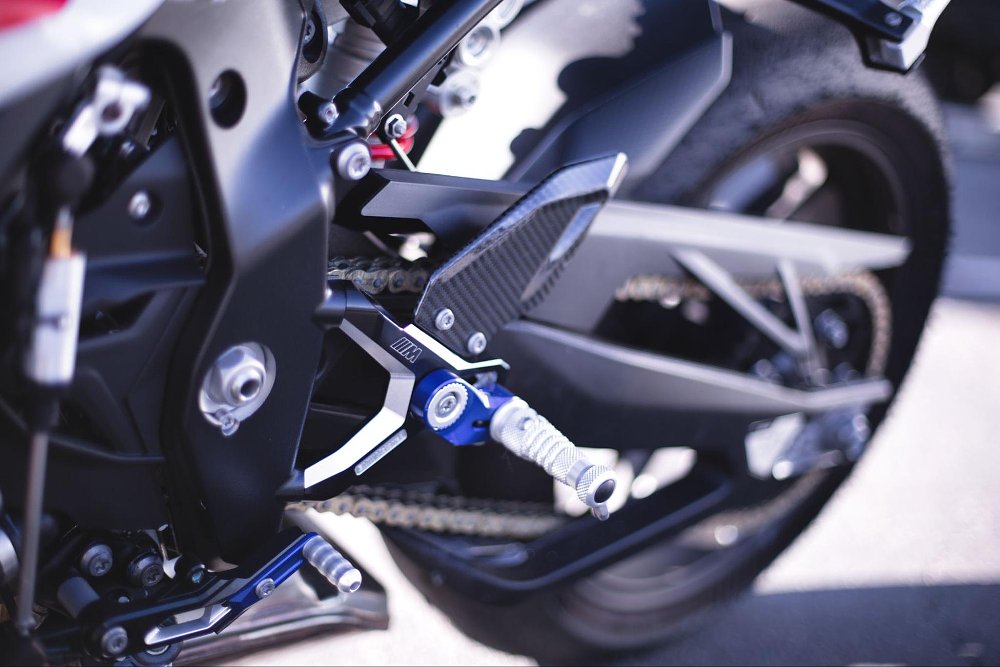
From my last ride on the BMW many years ago, I recalled feeling dwarfed by the ergonomics and a nagging sensation of a slow turn-in on the bike. The S 1000 RR has since undergone sweeping change, from the powerplant to refinements made to the frame and chassis, yet it still felt and rode the same as I remembered. It goes impressively fast, it brakes with accuracy, and once in the corner it was stable and confidence-inspiring. But I still fought the same sluggish turn in and felt overwhelmed by the girth and size of the liter bike. No amount of electronics could change that, at least not for this rider.
If the old superbike shootout of yesteryear were recreated and I had my choice of the flock, again the BMW would probably hover somewhere around third to fifth position in the lineup. I base this not on horsepower figures or specifications, but on what I know I am capable of as a track-day rider. I’ve been told by colleagues that the Beemer wants to be ridden “in anger” and that it is a “point-and-shoot” type of bike. I have never been and probably will never be that type of rider. My point is this — the S 1000 RR has all the proof it needs that it is an exceptional race track motorcycle. For my size, skill level, and preferred tracks, I believe there are other options out there that better suit my style.
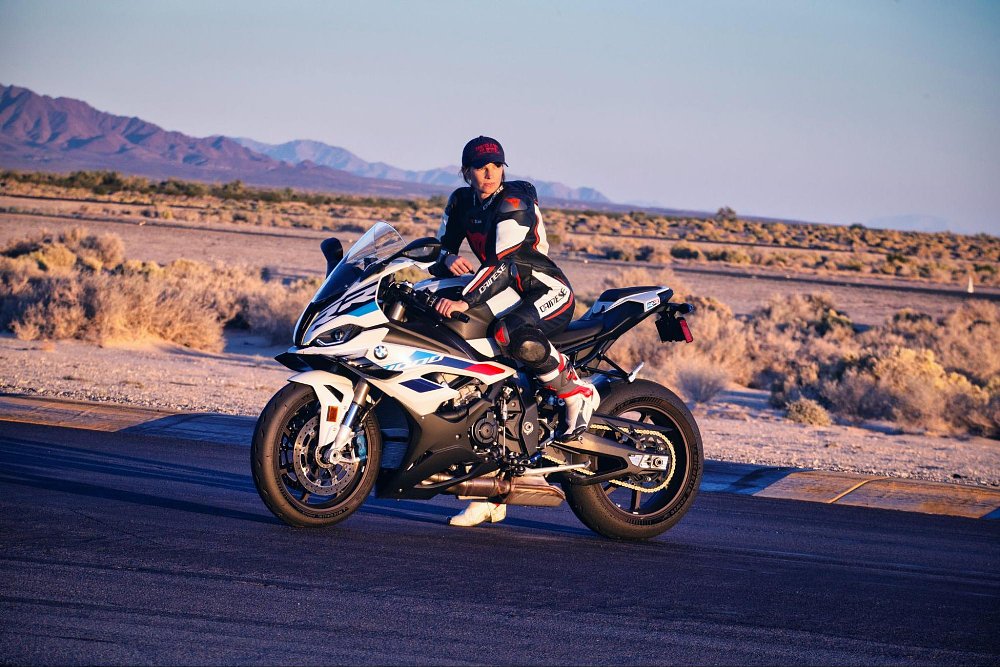
On the Street
It’s a travesty to see such a purebred race machine relegated to the benign conditions of street riding. That was my thinking for all these years, seeing the S1kRR only as a track bike. Let’s just say I am a much reformed rider on the subject after this test ride.
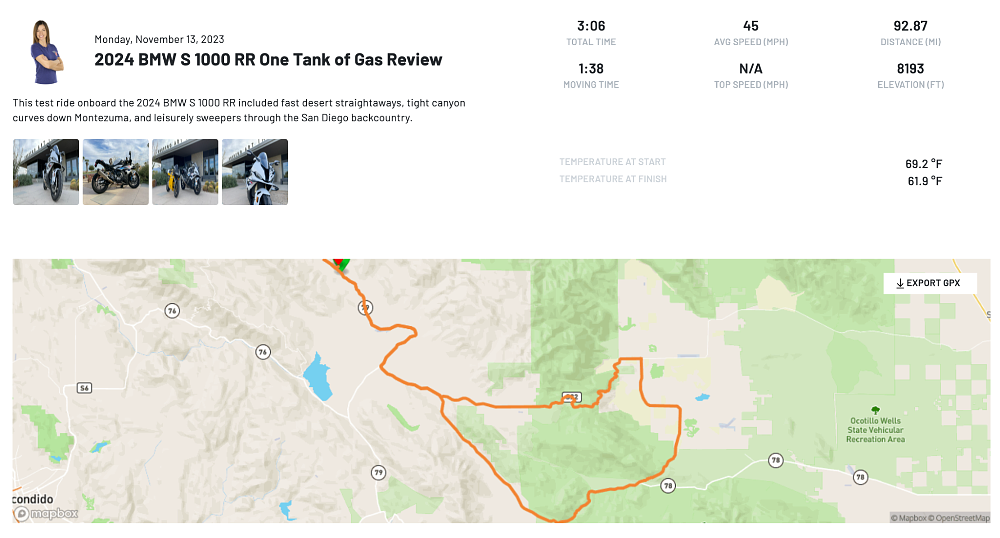
It starts in the saddle — a quite comfortable seat, to be honest. Those big wide ergonomics that made the bike difficult to hustle around the track provided better all-day comfort on the streets. Compared to some of the tortured, cramped rider triangles I have felt on all manner of sport bikes over the years, the S 1000 RR is a relaxed outlier.
Most liter-class race replicas are victims of their own racing DNA, so single-mindedly crafted for their purpose that they make terrible street bikes. BMW instead takes a page from its automotive book — the “ultimate driving machine” reimagined on two wheels. Heated grips, cruise control, quickshifter, and the ability to adjust the demeanor of the motorcycle via ride modes were all luxuries I enjoyed while cruising around my favorite back country roads.
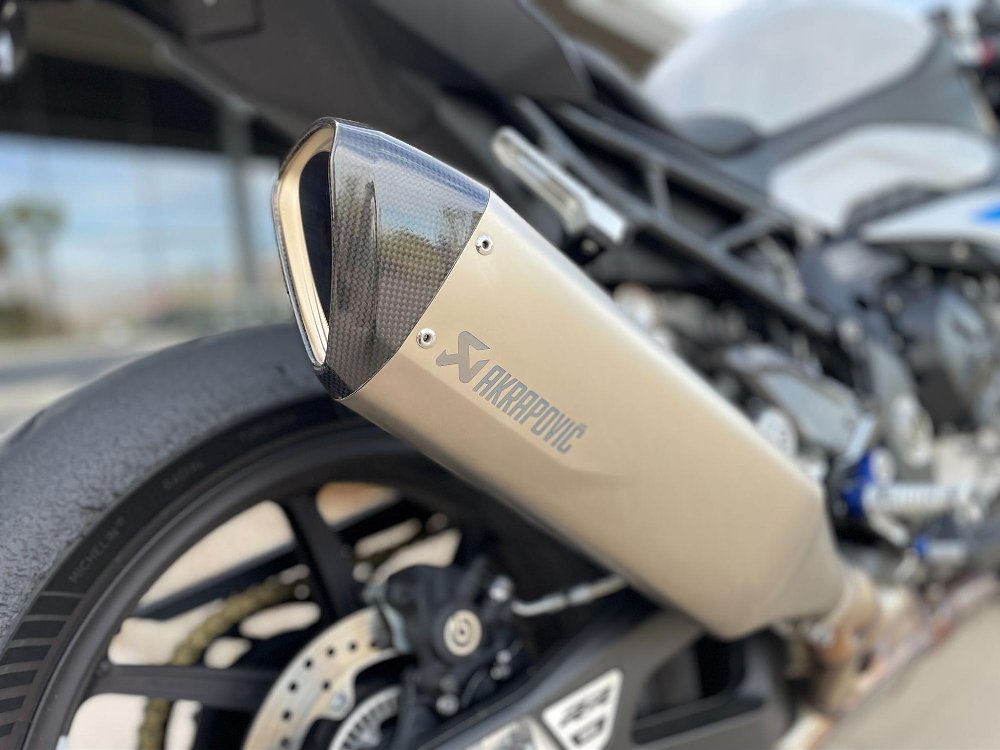
At street pace, the S 1000 RR is absolutely overkill. I could almost sense the mechanical version of a bored yawn from the Beemer as I careened down the curves of Montezuma Pass into Borrego Springs. Going fast on this bike is effortless and I shocked myself several times when looking down at the dash and discovering I was a healthy margin above the speed limit. Whatever mischief a rider might be searching for on a street ride, it's an easy bet that the BMW is game for it.
What is less obvious is that the S 1000 RR can be tamed to be a rather docile road companion. Put it in Road mode, allow the DDC to soften the suspension, and set the cruise control and suddenly the race track predator is trotting along on its electronic leash with a happy temper. This versatility might have surprised me the most about the BMW.
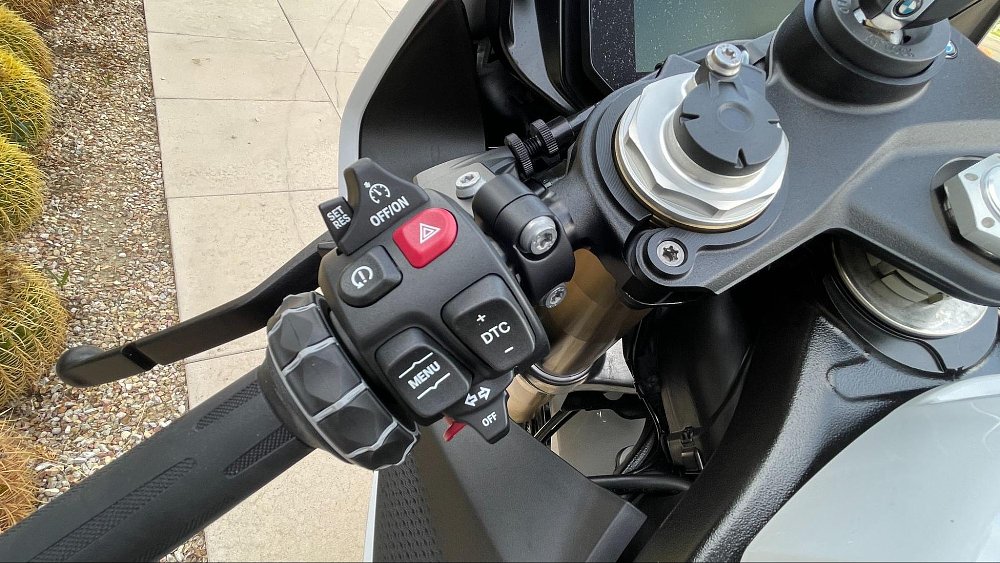
No bike is perfect, however. A noticeable vibration in the handlebar grips caused numbing on my fingertips on both the racetrack and on the street ride. Those video memes of riders struggling to find neutral on the S1kRR? Not entirely unfounded, in my experience. The quickshifter worked mostly reliably on both rides, but it can and will get very fussy if it disagrees with some shifting choices. It’s nitpicky stuff, but for a world-class superbike over $20,000 I expect a certain level of impeccability.
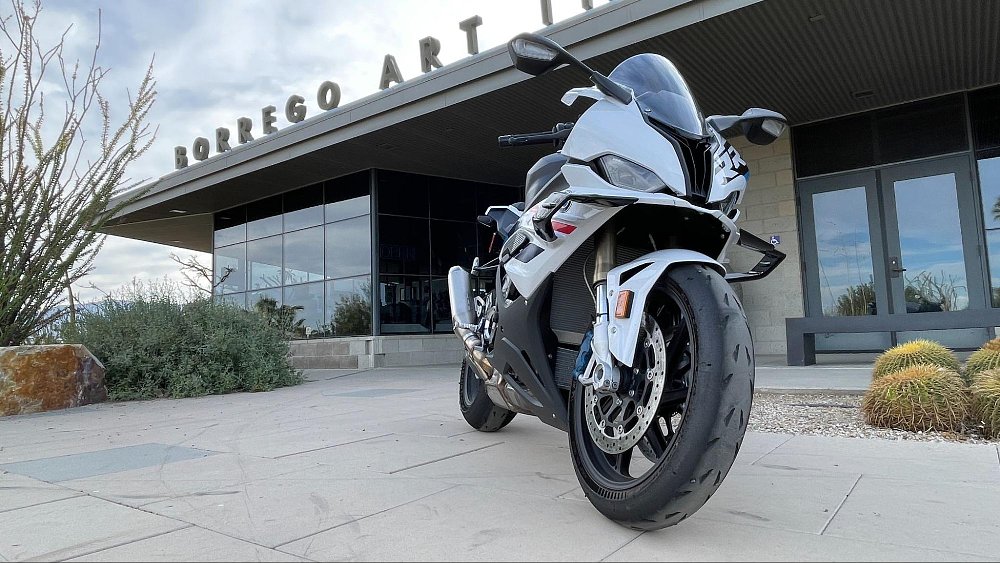
It is easy to sing praises for a no-expense-spared, European-built superbike. In fact, it’s expected. That is why it pains me to say that after this long-awaited ride I cannot shake the daze of ambivalence I feel about the BMW S 1000 RR. Everything on paper says this is an outstanding bike, it is gorgeous to look at, and it has adoring fans worldwide. The fact that I enjoyed it more on the street than on the track feels like sacrilege. I desperately want to love it, but somewhere our chemistry is off.
I would still maintain that it is an impressive motorcycle. But sometimes enjoying the ride and being one with a motorcycle takes more than that. It’s not you, BMW S 1000 RR, it’s me.
| 2024 BMW S 1000 RR | |
|---|---|
| Price (MSRP) | $25,980 |
| Engine | 999 cc, liquid-cooled, 16-valve, inline four-cylinder |
|
Transmission, final drive |
Six-speed, chain |
| Claimed horsepower | 205 horsepower @ 13,000 rpm |
| Claimed torque | 83 foot-pounds @ 11,000 rpm |
| Frame | Aluminum bridge frame with engine as stressed member |
| Front suspension | Inverted 45 mm fork, manually adjustable for preload, electronically adjustable for rebound and compression damping; 4.7 inches of travel |
| Rear suspension | Single shock, manually adjustable for preload, electronically adjustable for rebound and compression damping; 4.6 inches of travel |
| Front brake | Dual four-piston calipers, 320 mm discs with ABS |
| Rear brake | Single-piston caliper, 220 mm disc with ABS |
| Rake, trail | 23.6 degrees, 3.93 inches |
| Wheelbase | 57.4 inches |
| Seat height | 32.4 inches |
| Fuel capacity | 4.35 gallons |
| Tires | 120/70ZR17 front, 190/55ZR17 rear |
| Claimed weight | 434 pounds (wet) |
| Available | Now |
| Warranty | 36 months |
| More info | bmwmotorcycles.com |












